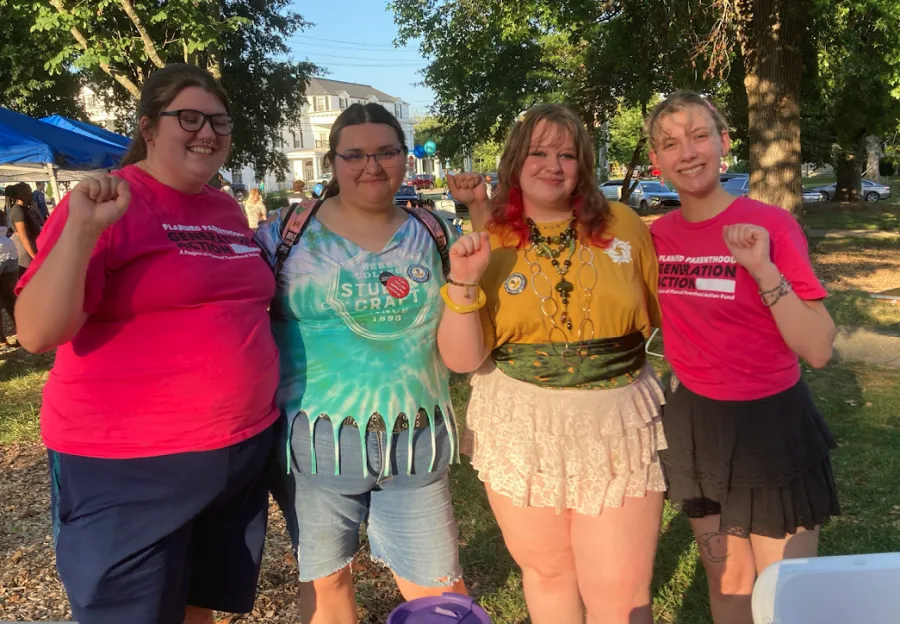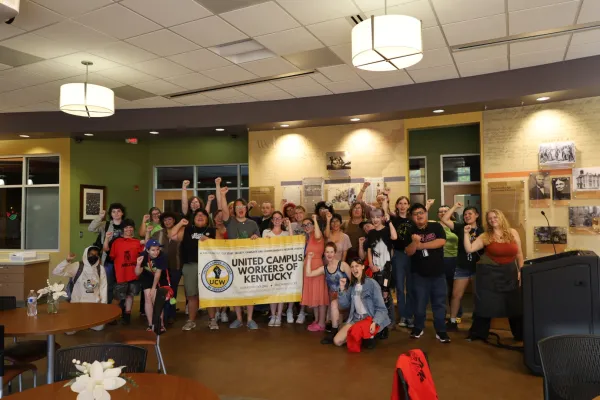Under Trump, Student Labor Organizers Face New Challenges

When Michael Ziegler started his PhD at Brown University in 2019, his union shop consisted entirely of graduate students. But in the past few years, three undergraduate bargaining units totalling about 500 students were formed at Brown, drastically expanding the size and reach of the union. Nationally, from 2020 to 2025, undergraduate unions went from two to more than two dozen, with many more in the works.
But whether this momentum can continue under Donald Trump’s National Labor Relations Board is unclear, as student organizers anticipate changes in their bargaining rights and a landscape far less friendly to collective bargaining. Some unions anticipate a rollback of recent NLRB precedent—recognizing undergraduate workers as primarily students rather than employees. These unions have withdrawn petitions for recognition and are looking to other paths to continue their work, including statewide labor law changes and other forms of collective power.
The employee status of student workers—such as graduate teaching assistants, undergraduate resident assistants, and other campus workers—will be determined by the NLRB, the agency that decides how the National Labor Relations Act is applied to protect employees and oversees petitions for union recognition. The NLRB’s position has fluctuated under different administrations. Those arguing against recognition say that student workers are primarily students, not workers, while organizers argue that their work is crucial for the functioning of their institution’s facilities, residence halls, and classrooms.
In 2016, under a ruling prompted by Columbia University, the NLRB granted students the right to be recognized as employees and unions. But during Trump’s first term, this status was almost overruled under a proposal which claimed to “bring stability to an area of federal labor law in which the Board, through adjudication, has reversed its approach three times since 2000.”
Under Biden, the proposal was withdrawn, paving the way for more than a dozen new undergraduate student unions in the following years, resulting in pay raises, representation at labor meetings, and protection of international students. At Swarthmore College, for example, the first contract for resident assistants included a 21 percent pay raise.
Since the decision, unions have spread like “wildfire” thanks to the younger generation’s accessibility on social media and the constant demands of an RA role, according to Nick Galipeau, secretary-treasurer of Office and Professional Employees International Union Local 153, which has organized many of them. “The social network among students across campuses is incredible,” Galipeau said. “When we ratify contracts at one university, we almost immediately get leads from other university groups and, at this point, we don’t have enough capacity to organize the amount of workers that want to be in the union.” Galipeau said he is involved in six to 10 new organizing movements, including petitions for recognition and election, and is in contact with another six groups—a big increase in interest over the past three months.
In July, Cornell PhD student Russell Burgett—represented by the National Right to Work Legal Defense Foundation—filed a charge with the NLRB in opposition to the school’s graduate student union that, if approved, could strip it and similar unions of their power. The NLRB currently lacks a quorum: two members on a five-person board and a permanent general counsel. But once Trump’s nominees are added, sometime in late 2025, the NLRB is expected to make its decision on student-employees before the end of the year. The scenario student organizers most worry about is the NLRA in its entirety being overturned, leaving private union law up to states, as was the case before the 1930s.
A Rhode Island bill passed June 9, led by the state’s AFL-CIO president Patrick Crowley, anticipates this scenario by changing the definition of who is an employee. Historically, public sector unions have fallen under state law, while the private sector falls under federal law. There have been exceptions for groups not employed by the state who are excluded from the NLRB, such as healthcare workers. “We thought it made sense to make sure that we updated our state labor relations act to say that if you are currently organized under the federal law and that jurisdiction is taken away, you can still organize under the state labor relations act,” Crowley said.
Ziegler, who leads 1000 unionized graduate students and three units of undergraduates as the president of Local 6156, worked with the AFL-CIO on the state effort. He says they are operating on the idea that unions can’t rely on federal law, and need to fall back on collective power. “We are going back to basics in a way, to something that was really the case for the majority of the history of organizing in the United States where you have a federal apparatus really hostile to the rights of workers and that doesn’t stop the organizing. It happened before, it will continue to happen,” Ziegler said.
“Regardless of whether the National Labor Relations Act recognizes student workers, we believe that every worker has the right to be part of a union,” Galipeau said. “Whether the NLRA or the NLRB says it’s legal or not for student workers to be union members or for students to be considered employees, we’re gonna continue to represent them. Workers coming together and organizing is what unions are all about.”
Berea College agrees to 'sick leave' policy for student workers

